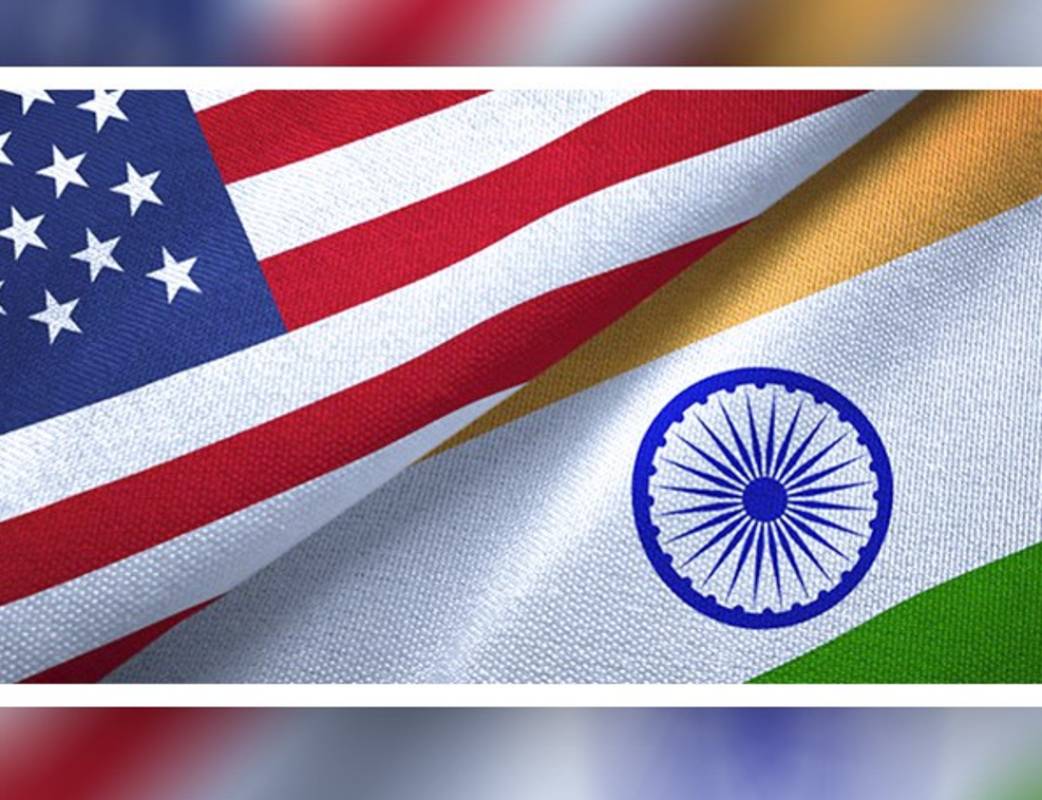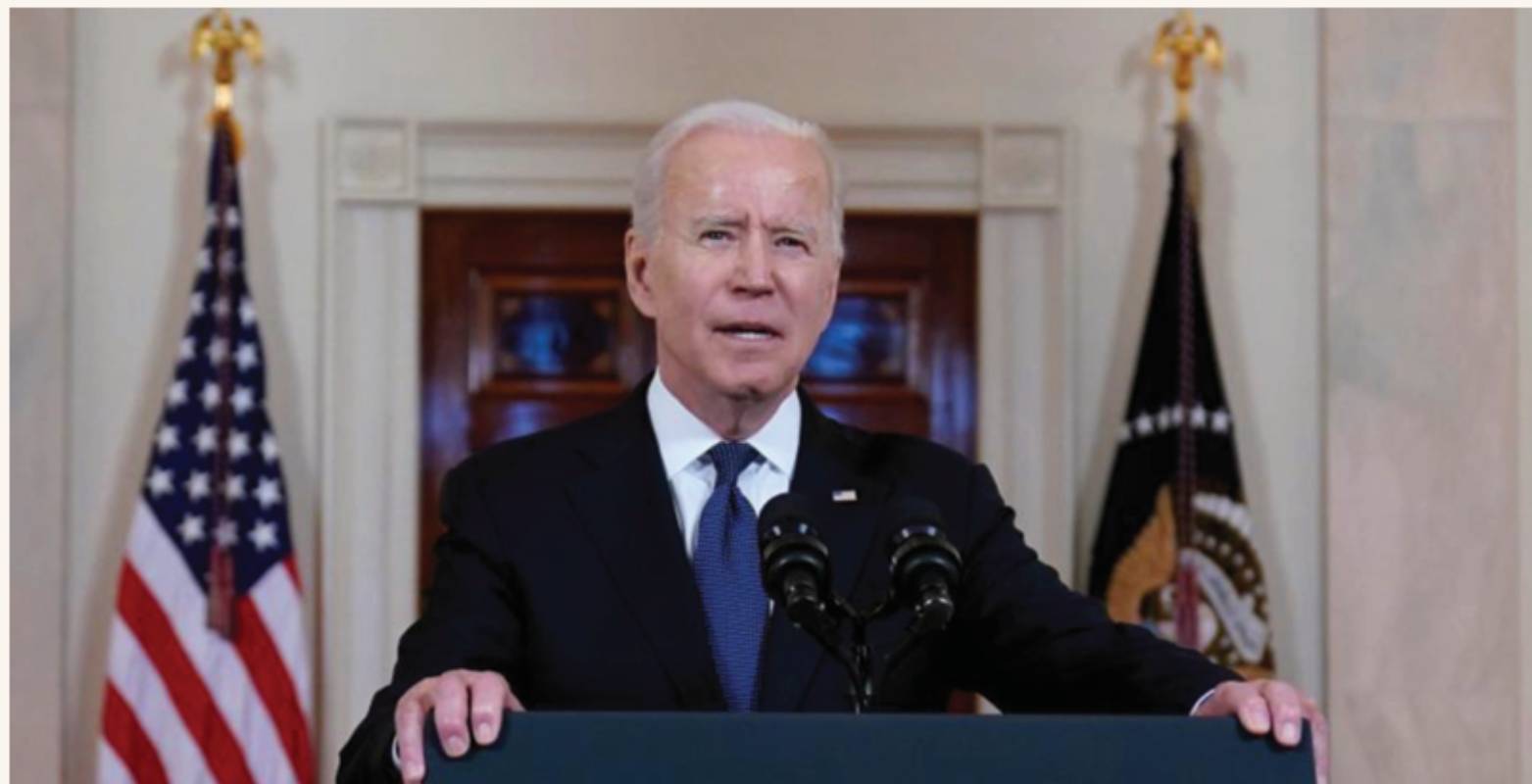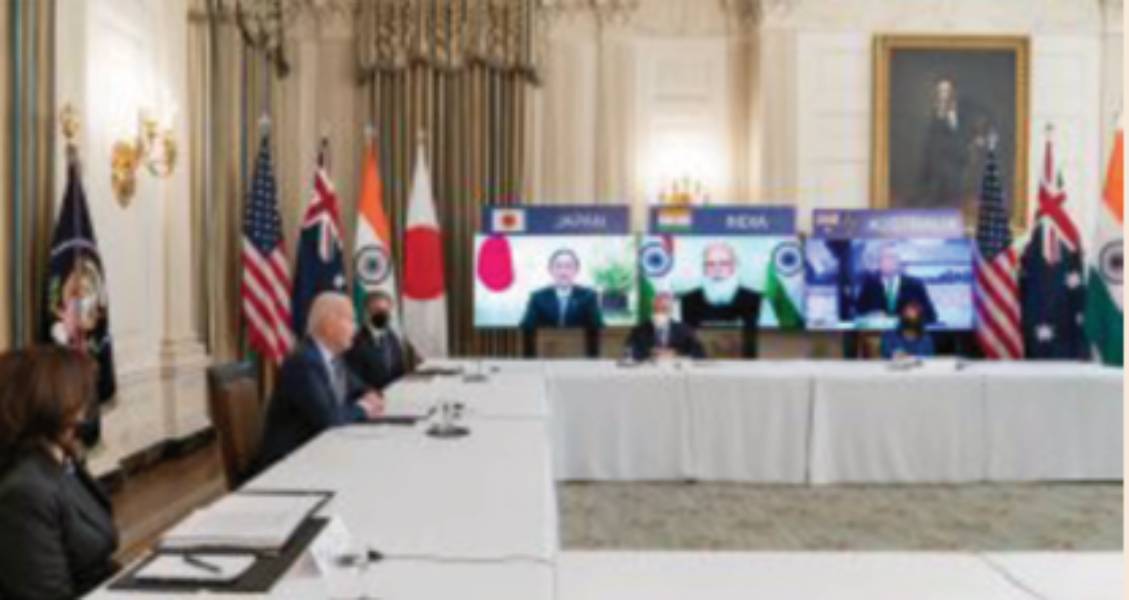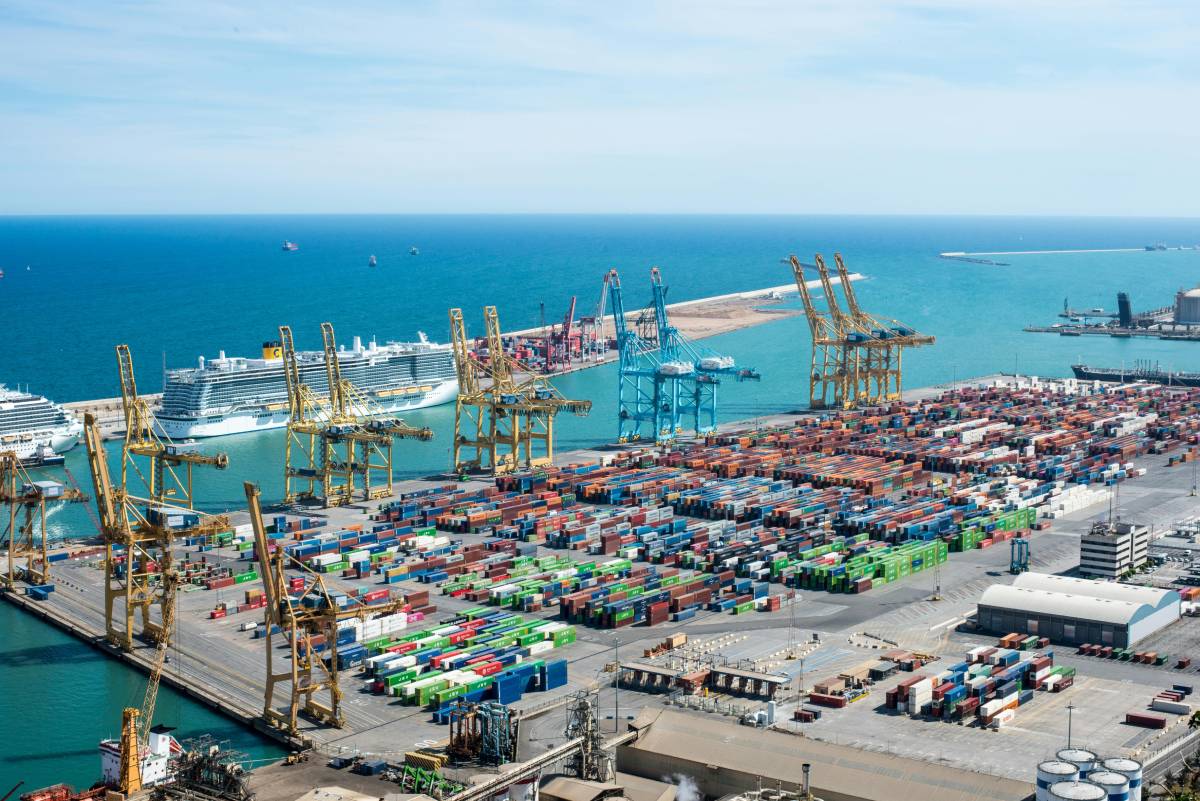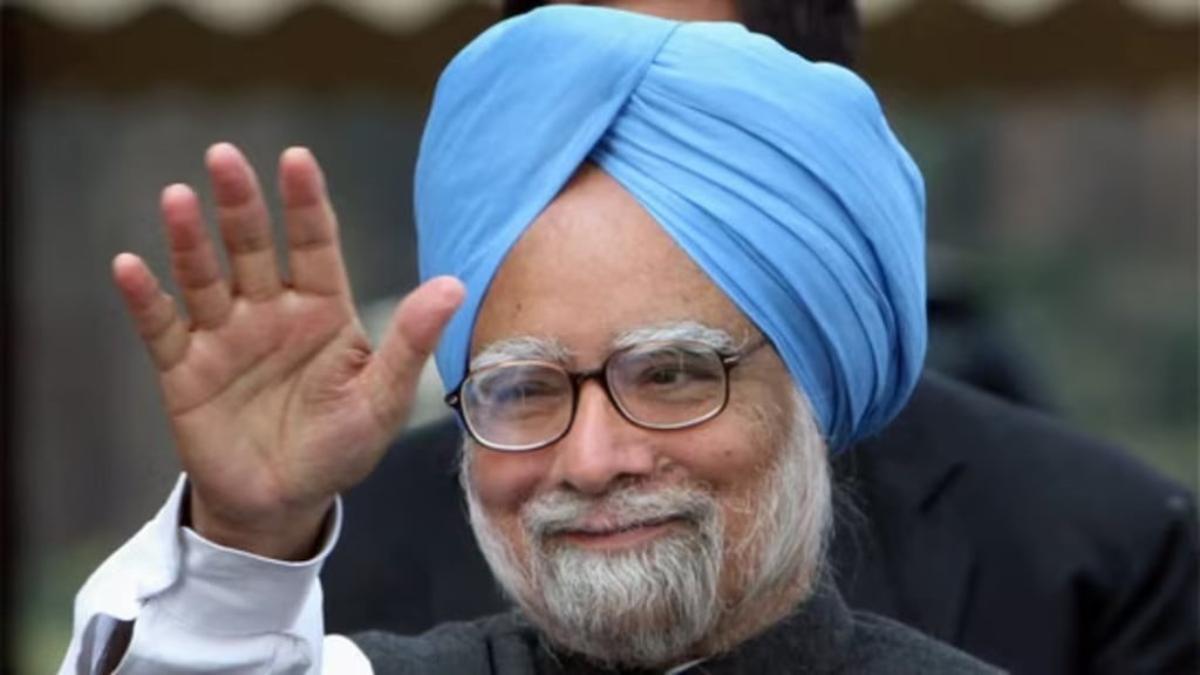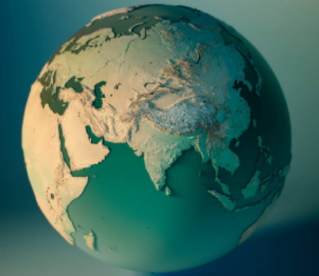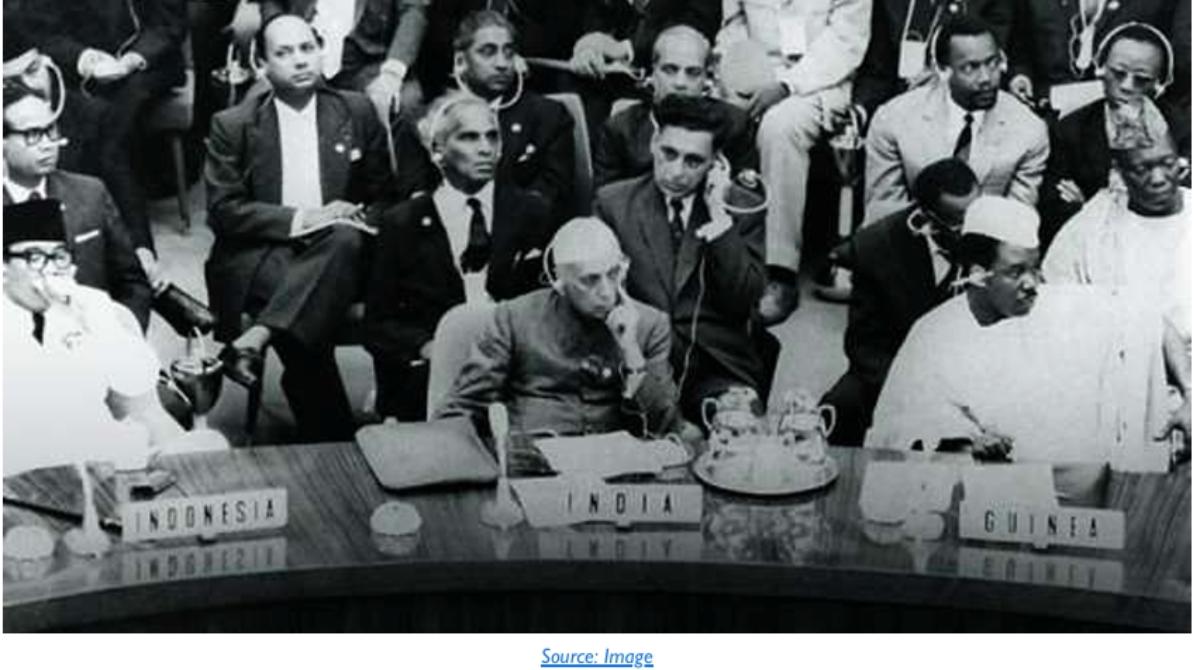We reproduce below several articles from various sources, which together indicate that after the advent of the Biden Administration in the US, the Indo-US relationship has entered a new phase, with some gains and some setbacks. Clear challenges lie ahead for the India- U.S. bilateral ties over military, economic, and climate matters; tensions over democracy and human rights could flare up at any moment.
India is ‘incredibly important’ partner to United States in the region and globally: White HousePublished: 26th June 2021 12:49 PM | Last Updated: 26th June 2021 12:49 PM | A+A A-
US President Joe Biden (Photo | AP) PTI,WASHINGTON: India is an “incredibly important” partner to the US in the region and globally, the White House has said, underlining that America is working with the country on wide-ranging issues like economic, strategic and security. White House Press Secretary Jen Psaki on Friday said that the US took a range of steps to help India to deal with the COVID-19 pandemic. “India is an incredibly important partner to the United States in the region and globally. We work with India on a range of issues, as you well know — economic, strategic, security,” White House Press Secretary Jen Psaki told reporters at her daily news conference. |
| “The United States certainly took a range of steps, as India was at the early stages of dealing with a rise in the pandemic, to help provide a range of assistance, and we will continue to do that moving forward,” Psaki said in response to a question.
In April and May, India struggled with the second wave of the Covid-19 pandemic with more than 3,00,000 daily new cases. Hospitals were reeling under a shortage of medical oxygen and beds. In mid-May, new coronavirus cases in India hit a record daily high with 4,12,262 new infections. In May, President Joe Biden announced USD 100 million worth of COVID-19 assistance to India.The US-India Chambers of Commerce Foundation has raised more than USD 1.2 million for coronavirus-related efforts in India.With a record-breaking fundraising, US-India Chambers of Commerce Foundation has shipped or en route nearly 120 ventilators and over 1,000 oxygen concentrators, a release said on June 3. Also, India will be a significant recipient of the US vaccines after Biden announced details of his administration’s decision to send 25 million COVID-19 shots to countries across the globe. India has been included in both the identified categories – direct supply to neighbours and partner countries, and under the COVAX initiative. On June 4,Vice President Kamala Harris personally made a call to Prime Minister Narendra Modi to inform him about the administration’s decision to send tens of thousands of doses of life-saving COVID-19 vaccines to India. |
Is There Trouble Ahead for the US and India?By Mike Watson9 , June 18, 2021 President Joe Biden, joined by Vice President Kamala Harris, Secretary of State Antony Blinken and White House staff, participates in the virtual Quad Summit with Australia, India, and Japan Friday, March 12, 2021, in the State Dining Room of the White House
Credit: Official White House Photo by Adam Schultz As U.S. Vice President Kamala Harris confirmed in her recent call with Indian Prime Minister Narendra Modi, given that the coronavirus pandemic has receded in the United States, Washington can afford to send more vaccines and other aid abroad and India is at the top of the U.S. list. This is both a humane measure and smart policy: Indians have suffered tremendously throughout the pandemic, with a particularly lethal wave this spring driving the official death toll above 300,000; the unofficial toll is much higher. India is also an important partner for the United States and is one of the few countries that can act as an effective counterbalance to China and prevent Beijing from dominating Asia. U.S. and Indian strategists have long recognized this confluence of interests and have worked to strengthen the bilateral relationship, but it has been a difficult process and is likely to remain so. Despite frequent references to the natural alliance between the world’s oldest democracy and the world’s largest, the ties between New Delhi and Washington are unlikely to ever rival the closeness of the Anglo-American special relationship. U.S. Secretary of State Antony Blinken, who lived in France during his childhood, may find Modi to be as important but difficult to work with as his predecessors found Charles de Gaulle. President Joe Biden can make significant progress with India, but to do so, he will have to set aside some of his other top priorities on Russia, trade, the environment, and maybe even human rights. If he does not, by the end of the year there will be a significant dust-up in Indian-American relations. One of the most important obstacles that Biden and Modi will have to navigate is in the military sphere.The 2005 civil nuclear agreement was a diplomatic breakthrough that lifted American sanctions related to India’s nuclear program and made a strategic partnership possible. Since then, the U.S. has designated India a major defense partner, stepped up sales of military equipment, and negotiated agreements with India to facilitate military logistical and communications coordination. India and the United States form half of the Quad, which is becoming a vitally important network for managing Indo-Pacific affairs. Despite these promising developments, there are storm clouds on the horizon. Although India was a founding member of the non-aligned movement, it maintained close ties with the Soviet Union during the Cold War and still has close ties with Russia today. In October 2019, India agreed to purchase Russia’s S-400 anti-aircraft missile system and is set to receive the first set of deliveries toward the end of this year. The Countering America’s Adversaries Through Sanctions Act (CAATSA) requires the U.S. to sanction India for this deal, as NATO member Turkey found out late last year when it was sanctioned.The Trump administration told India that it was unlikely to get a waiver from the law. Will the Biden administration show more flexibility? Russian propaganda activities during the 2016 election made a tough Russia policy a high priority for Democrats, and Biden has already made significant concessions to Moscow by waiving sanctions on the Nord Stream 2 gas pipeline in Europe and extending the New START arms control agreement. Moreover, the S-400 delivery will add significant complications to India-U.S. military cooperation and will probably prevent India from acquiring top-shelf American aircraft such as the F-35. However, these difficulties are likely to be worse if the U.S. imposes sanctions, so Biden might have to waive the sanctions and accept a hard limit on joint operations as the cost of the Indian decision. Taking a longer view, boosting the Indian economy is very important for the United States. The OECD recently projected that India’s GDP will be nearly 9 percent lower in 2025 than it was expected to be before the pandemic, and Bangladesh recently surpassed it in GDP per capita.A wealthier India is a stronger India, and more growth would make it better able to stand up to China. A larger Indian economy would also provideWestern companies and investors an alternative to China, but only if Biden and Modi can reach an agreement on trade restrictions. Modi’s “Atmanirbhar Bharat” call for self-reliance does not bode well for a trade deal, nor does India’s last-minute decision to withdraw from the Regional Comprehensive Economic Partnership (RCEP) trade pact, which left Japan alone as the only counter to China in the agreement. India is also altering investment rules that will hurt U.S. companies even more than an earlier 2018 rule change did. Earlier this month, the U.S. announced tariffs on India and other countries for their new taxes on American tech companies, but also a 180-day delay to allow for a negotiated settlement. The most dramatic showdown may come before that deadline passes. The 26th United Nations Climate Change Conference of the Parties (COP26) will be held in the first half of November, and there could be fireworks in Glasgow between the U.S. and India. India is already the third-largest greenhouse gas emitter and its demand for energy will grow faster than any other country for the next two decades. It has accordingly ruled out a zero-emissions goal, which the energy minister has called “pie in the sky.” At Biden’s Earth Day summit, he and Modi announced a new green energy partnership, but Modi did not otherwise change any of the policies that are likely to lead to a 50 percent increase in emissions by 2040. If Modi holds firm in November, what will Biden do? The military, economic, and climate policy controversies are already set on a fixed timeline, but tensions over democracy and human rights could flare up at any moment.While on the campaign trail, Biden expressed deep concerns about the Indian government’s treatment of its Muslim minority, particularly in Kashmir, as have prominent progressive Democrats like Senator Bernie Sanders. Muslims are not the only religious minority who could cause friction between U.S. human rights champions and the Hindu nationalist government, however: India has also cracked down on Christian organizations, such as the aid and development group Compassion International. If they intensify this activity, it could start to unsettle Christian leaders in the U.S., particularly Evangelicals who wield significant heft in the Republican Party. If New Delhi is not careful, it could break up the strong bipartisan support for the relationship (the Senate India Caucus has 31 members) and create instead a bipartisan opposition to closer ties. Although many of the Indian elite speak English and the country shares with the United States a history of colonization by Great Britain,Washington has substantial disagreements with New Delhi that will be hard to manage. Nevertheless, the Biden administration has to get this right: India has the potential to be an important contributor to Asian security and prosperity, and this relationship is too valuable to lose. |
Biden Administration and Human Rights – Implications for India
Much before Joe Biden assumed the office of President of United States (POTUS) on January 20, 2021 his strong views on human rights were well known. This was natural given the contrast in the images of two presidential candidates,Trump and Biden. Under Trump, United States had exited from UN Human Rights Council while Biden had pledged during his election campaign that if elected he’d ensure the return of US to the august body.
There was an element of continuity and credibility here: during Joe Biden’s long career in the US Senate, he established a record of supporting human rights as a goal of American foreign policy. Third, was the divergent approaches of the two on foreign policy: Trump was isolationist, and with his ‘America First’ slant favoured bilateralism over multilateralism. Biden was the opposite. Actually, in a In a lengthy article published in the March-April 2020 edition of Foreign Affairs, Biden set out his foreign policy vision to restore the US “at the head of the table” and in “a position to work with its allies and partners to mobilize collective action on global threats.”
It was not just Joe Biden. Kamala Harris, his running mate had equally strong views, if not more. Actually, Harris had participated in many Congressional hearings where strong objections were raised against India’s human rights record. So, it was almost given that with the Biden administration in place, human rights would be an issue of some concern, and possibly cause some tension, in bilateral relations between India and United States.
On March 30, 2021, US Department of State, Bureau of Democracy, Human Rights and Labor released 2020 Country Reports on Human Rights Practices: India.While the previous year’s report had said that India had `significant human rights issues’, the Trump administration didn’t make that an issue, except when Zalmay Khalilzad made an airdash to Delhi the very next after abrogation of Article 370. Khalilzad was at that time at intra-Afghan consultation at Doha following the peace agreement he had signed with the Taliban.
But the release of this year’s report caused some flutter. Policy Watch presents a snapshot of developments.
| Home Reports Bureau of Democracy, Human Rights, and Labor2020 Country Reports on Human Rights Practices India – US Department of State, March 30, 2021
India is a multiparty, federal, parliamentary democracy with a bicameral legislature. The president, elected by an electoral college composed of the state assemblies and parliament, is the head of state, and the prime minister is the head of government. Under the constitution, the country’s 28 states and eight union territories have a high degree of autonomy and have primary responsibility for law and order. Electors chose President Ram Nath Kovind in 2017 to serve a five-year term, and Narendra Modi became prime minister for the second time following the victory of the National Democratic Alliance coalition led by the Bharatiya Janata Party in the 2019 general election. Observers considered the parliamentary elections, which included more than 600 million voters, to be free and fair, although there were reports of isolated instances of violence. The states and union territories have primary responsibility for maintaining law and order, with policy oversight from the central government. Police are under state jurisdiction.The Ministry of Home Affairs controls most paramilitary forces, the internal intelligence bureaus and national law enforcement agencies, and provides training for senior officials from state police forces. Civilian authorities maintained effective control over the security forces. Members of the security forces committed some abuses. Significant human rights issues included: unlawful and arbitrary killings, including extrajudicial killings perpetrated by police; torture and cases of cruel, inhuman, or degrading treatment or punishment by some police and prison officials; arbitrary arrest and detention by government authorities; harsh and life-threatening prison conditions; political prisoners or detainees in certain states; restrictions on freedom of expression and the press, including violence, threats of violence, or unjustified arrests or prosecutions against journalists, use of criminal libel laws to prosecute social media speech, censorship, and site blocking; overly restrictive rules on nongovernmental organizations; restrictions on political participation; widespread corruption at all levels in the government; lack of investigation of and accountability for violence against women; tolerance of violations of religious freedom; crimes involving violence and discrimination targeting members of minority groups including women based on religious affiliation or social status ; and forced and compulsory child labor, as well as bonded labor. Despite government efforts to address abuses, a lack of accountability for official misconduct persisted at all levels of government, contributing to widespread impunity. Investigations and prosecutions of individual cases took place, but lax enforcement, a shortage of trained police officers, and an overburdened and underresourced court system contributed to a low number of convictions. Separatist insurgents and terrorists in the Union Territory of Jammu and Kashmir, the Northeast, and Maoist-affected areas committed serious abuses, including killings and torture of armed forces personnel, police, government officials, and civilians, and recruitment and use of child soldiers. The government continued taking steps to restore normalcy in Jammu and Kashmir by gradually lifting some security and communications restrictions. The government released most political activists from detention. In January the government partially restored internet access; however, high-speed 4G mobile internet remained restricted in most parts of Jammu and Kashmir.The government began a process to redraw electoral constituencies but did not announce a timeline for local assembly elections. Local district development council elections took place in December in which a coalition of Kashmiri opposition parties won the majority of seats. For detailed report, see PDF file available at the State Department’s website. |
The publication of the above report by US State Department caused immediate consternation in official quarters in India as is evident from the following media report:
‘There must be proper understanding of developments in India’: MEA on US human rights report10The report had identified unlawful, arbitrary killings and detentions, and restrictions on freedom of expression and press as some of the concerns in India. The Ministry of External Affairs on Friday dismissed a United States report flagging human rights concerns in India. “This is clearly an internal exercise of the US government,” foreign ministry spokesperson Arindam Bagchi said during a press briefing.“We are not a party to it. There should be a proper understanding of developments in India.” The US State Department had onTuesday released the 2020 Country Reports on Human Rights Practices.The report identified “unlawful and arbitrary killings, arbitrary arrest and detention by government authorities, overly restrictive rules on non-governmental organisations, violence against women and minorities and restrictions on freedom of expression and the press” as some of the concerns in India. “There were several instances in which the government or actors considered close to the government allegedly pressured or harassed media outlets critical of the government, including through online trolling,” the report said.“There were also reports of extremists perpetrating acts of killing, violence, and intimidation against journalists critical of the government.” The report also spoke about the detention of Jamia Millia Islamia student Safoora Zargar in connection with the large-scale communal violence that took place in Delhi last year as well as the arrest of activist Umar Khalid. The US State Department report highlighted the “serious abuses” of terrorists in Jammu and Kashmir and the North East,“including killings and torture of armed forces personnel, police, government officials, and civilians, and recruitment and use of child soldiers”. The report also noted the steps taken by the Centre to restore normalcy in Jammu and Kashmir.“The government released most political activists from detention,” it said.“In January, the government partially restored internet access; however, high-speed 4G mobile internet remained restricted in most parts of Jammu and Kashmir. Local district development council elections took place in December, in which a coalition of Kashmiri opposition parties won the majority of seats.” US Secretary of Defense Lloyd Austin had visited India last month. Austin said that he had discussed human rights violation in India, “especially against Muslim minorities in the northeast”, with the ministers of the Narendra Modi-led government. Ahead of his visit, United States Democratic Senators Bob Menendez had written to Austin, asking him to raise “democracy and human rights concerns” in his discussions with the Indian government. Mendez citied the crackdown on the farmers protesting against the new agricultural laws and intimidation of journalists under the Modi regime, saying these indicators had only underscored the “deteriorating situation of democracy” in India. Last month, some reports by international organisations raised concerns about the steady subversion of democracy and erosion of civil rights in India under Narendra Modi’s regime. The US-based non-government organisation Freedom House’s report on political rights and civil liberties lowered India’s status from “free” in 2020, to “partly free” this year. It said that the situation “deteriorated since Narendra Modi became prime minister in 2014” and the decline only “accelerated after Modi’s reelection in 2019.” Sweden based-research instituteVarieties of Democracy (V-Dem) Institute’s report,meanwhile, said that India has turned into an “electoral autocracy”. It said India’s autocratisation process has “largely followed the typical pattern for countries in the ‘Third Wave’ over the past ten years: a gradual deterioration where freedom of the media, academia, and civil society were curtailed first and to the greatest extent”. |
India dismissed these reports, saying that the country does not need approval or tedious moral lectures from a “set of self-appointed custodians of the world”.
It is one thing for India to dismiss a Congressional report but quite another when a senior government official of the Biden administration speaks on it. Policy Watch therefore reproduces a short piece by US based India correspondent, Chidananda Rajaghatta:
| US official: Concern over Indian actions not consistent with its democratic values11
Chidanand Rajghatta / TNN / Updated: Jun 13, 2021 WASHINGTON: Apprehensions in New Delhi that human rights and civil liberties issues will come to the fore in a Biden administration was vindicated this week when a senior US administration official expressed concern about recent actions of the Modi government that he said do not conform to the country’s democratic values. “India remains the world’s largest democracy with a strong rule of law and independent judiciary and enjoys a strong and growing strategic partnership with the United States. However, some of the Indian government’s actions have raised concerns that are inconsistent with India’s democratic values,” Acting Assistant Secretary of State for South and Central Asia Dean Thompson told a Congressional panel hearing testimony on democracy in the Indo-Pacific region. “This includes increasing restrictions on freedom of expression and the detention of human rights activists and journalists,” Thompson told the sub-committee, adding the US regularly engages in and on these issues, including the important work of civil society. Increased detention and prosecution of journalists and civil liberties activists in India is drawing attention of their counterparts in US who have found voice in the Biden administration after such issues were sidelined during the Trump era. Administration officials and lawmakers too have raised the issue tactfully and in context. Although the panel heard testimony on poor human rights record in the region, including in China and Pakistan, India is held to a higher standard given its democratic credentials. The broader sentiment at the hearing though remained in favor of a strong US-India partnership particularly in the light of China’s belligerence, a view Thompson agreed with. |
Now the question is, in real terms, what effect the above exertions will have on bilateral relations between India and United States? Would there be sanctions, or withdrawal of some concessions, or withdrawal of support in some fora, or behind-the-scene tough talking? Realpolitik indicates that in practice, many pious utterances are only half met. Two recent examples after Biden took over suffice. First, while Biden had pledged to make Saudi Arabian prince involved in the torture and murder of journalist Jamal Ahmad Khashoggi into a “pariah”, only mild action followed. The same goes for Biden exempting human rights considerations for extending massive military aid to Egypt. .. Perhaps the imperatives of balancing other considerations in the India-US relations will lead to this issue being put on the list of “mentioned in passing” topics.
Footnotes:
9 Mike Watson is the associate director of Hudson Institute’s Center for the Future of Liberal Society. The article first appeared at https://thediplomat.com/2021/06/is there-trouble-ahead-for-the-us-and-india/
10 https://scroll.in/latest/991276/there-must-be-proper-understanding-of-developments-in-india-says-mea-on-us-human-rights-report
11 https://timesofindia.indiatimes.com/world/us/biden-mandarins-twit-india-on-human-rights-even-as-they-talk-up-broader-ties/articleshow/83469147.cms

